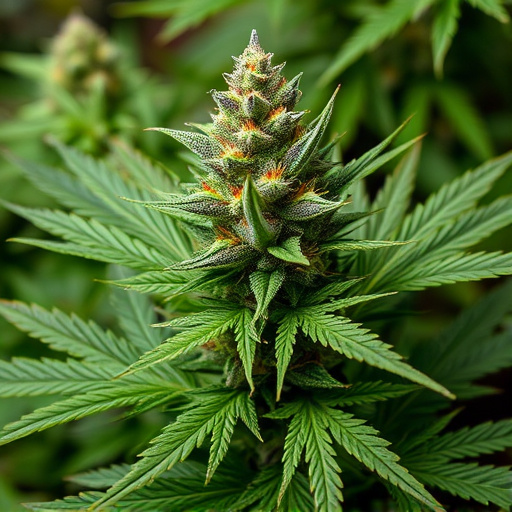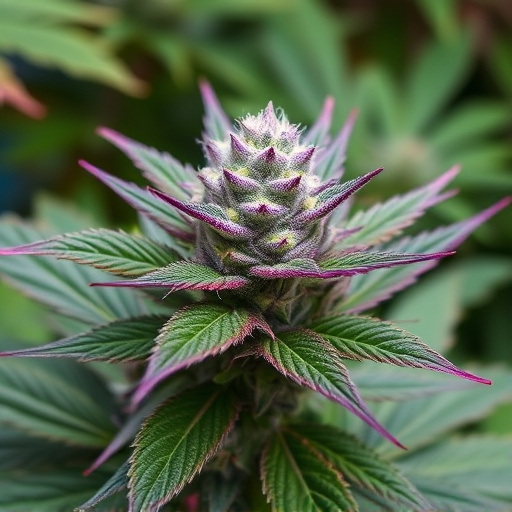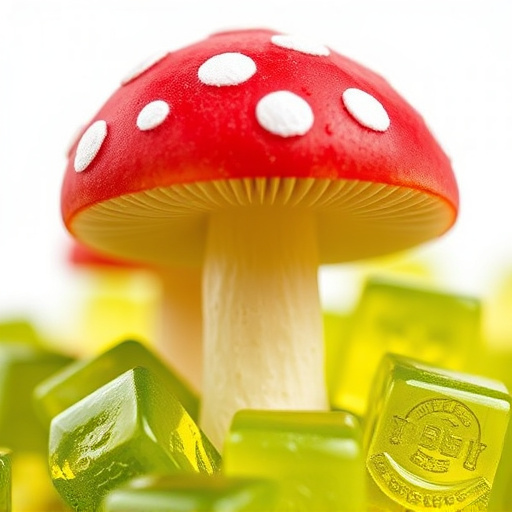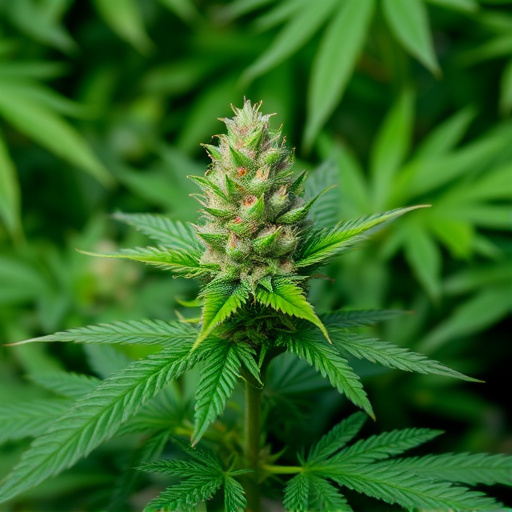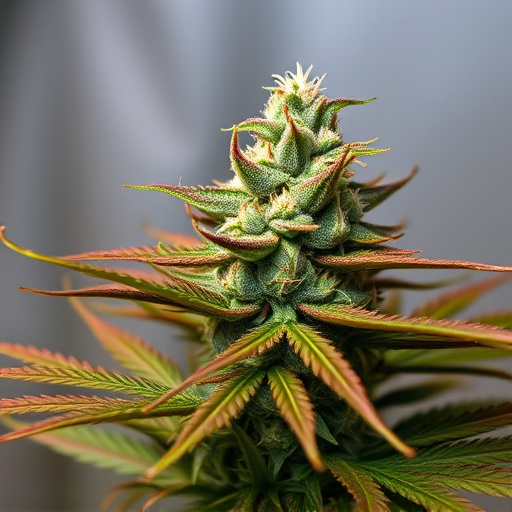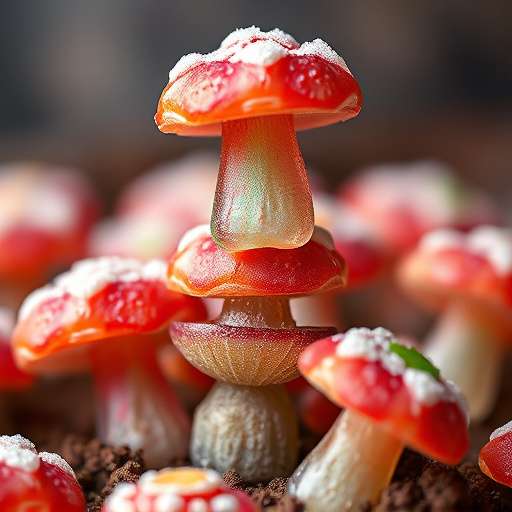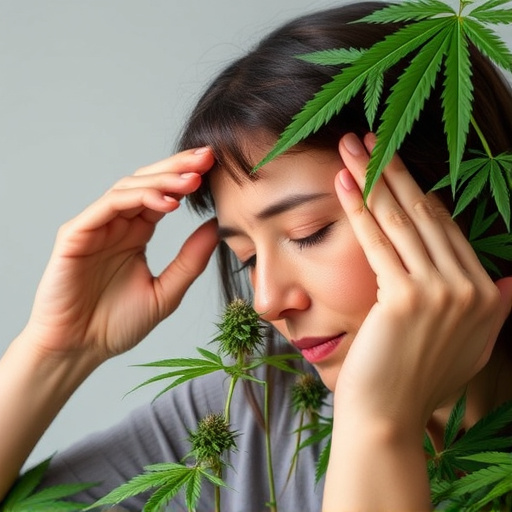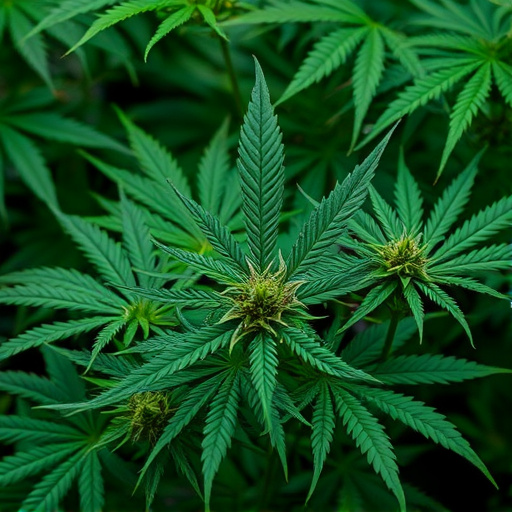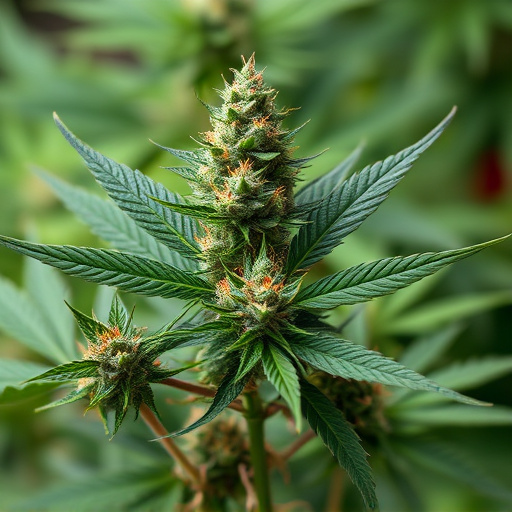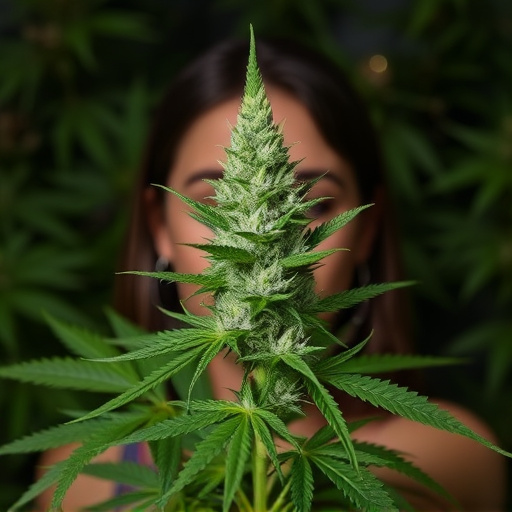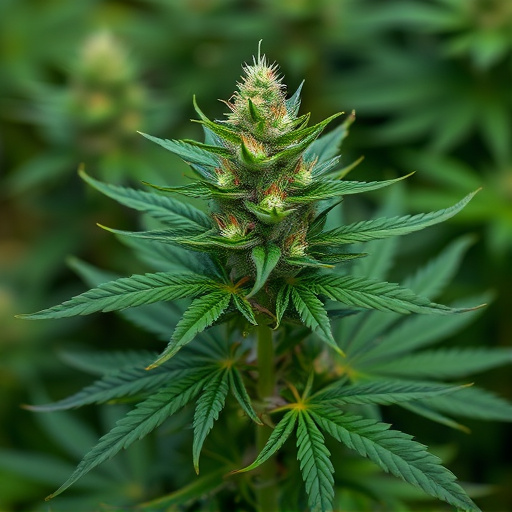Cannabis compounds like THC and CBD interact with dopamine and serotonin systems in the brain, offering potential migraine relief. THC primarily targets dopamine, inducing euphoria and pain reduction, while CBD interacts more with serotonin, reducing inflammation and mood regulation. High-CBD, low-THC strains show promise for treating migraines without cognitive side effects, but consultation with healthcare professionals is essential before exploring this alternative treatment.
Cannabis has long been known for its ability to interact with the body’s endocannabinoid system, but its effects on neurotransmitters like dopamine and serotonin remain a topic of interest. This article delves into the intricate relationship between cannabis, dopamine, and serotonin, focusing specifically on how these compounds influence conditions such as migraines. By exploring cannabis strains known for their potential migraine relief, we uncover the science behind these popular treatments. Understanding these neurotransmitters and their interactions offers valuable insights into the therapeutic potential of cannabis.
- Understanding Dopamine and Serotonin: The Neurotransmitters and Their Roles
- Cannabis Interaction with Dopamine and Serotonin Systems
- Cannabis Strains for Migraines: Exploring the Science Behind It
Understanding Dopamine and Serotonin: The Neurotransmitters and Their Roles
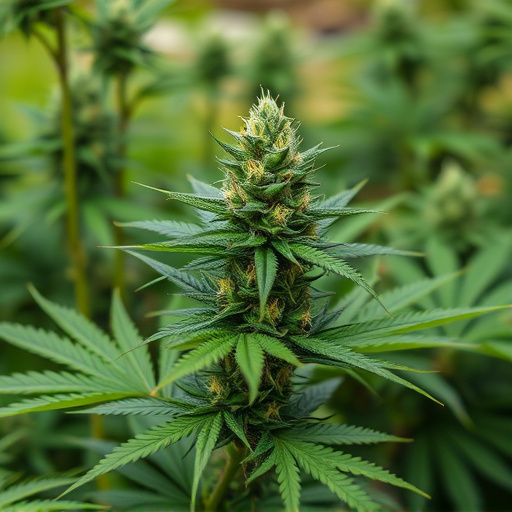
Dopamine and serotonin are two key neurotransmitters that play significant roles in regulating mood, motivation, and overall well-being. Dopamine is often associated with pleasure, reward, and motor control, while serotonin influences social behavior, appetite, and sleep. These chemical messengers work together to maintain a balanced mental state.
In the context of cannabis strains for migraines, understanding how these neurotransmitters interact with the endocannabinoid system offers insights into potential therapeutic effects. Cannabis contains compounds called cannabinoids that can bind to and modulate dopamine and serotonin receptors, leading to various physiological changes, including pain relief and reduced inflammation. This interaction highlights the complex relationship between cannabis, brain chemistry, and conditions like migraines.
Cannabis Interaction with Dopamine and Serotonin Systems

Cannabis has a complex interaction with the brain’s dopamine and serotonin systems, which play crucial roles in regulating mood, pleasure, and pain perception. When cannabis is consumed, its chemical compounds, particularly tetrahydrocannabinol (THC) and cannabidiol (CBD), bind to specific receptors within these systems. THC primarily targets the dopaminergic system, stimulating the release of dopamine and enhancing its activity. This interaction can lead to the euphoric effects associated with cannabis use and may offer potential relief for conditions like migraines, as increased dopamine levels can reduce pain perception.
On the other hand, CBD has been found to interact more with the serotonin receptors. It can modulate serotonin release and influence serotonin receptor activity, which is involved in regulating mood, anxiety, and appetite. This interaction might contribute to the anti-inflammatory and analgesic effects of cannabis, making it a potential treatment option for migraine headaches. Certain cannabis strains known for their high CBD content have shown promise in clinical studies for managing migraines without causing the cognitive impairment sometimes associated with THC use.
Cannabis Strains for Migraines: Exploring the Science Behind It
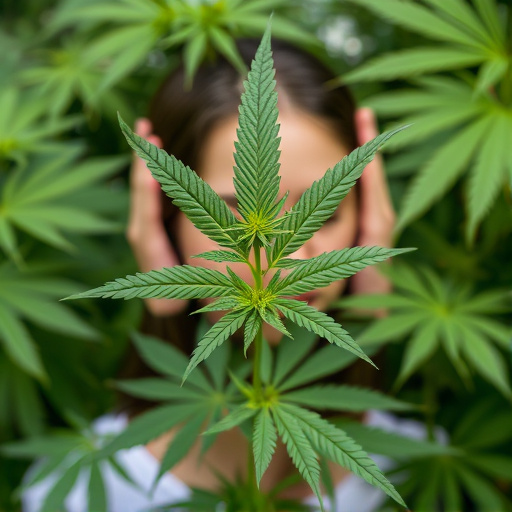
Cannabis has been used for centuries as an alternative treatment for various ailments, and its potential benefits for migraine relief have gained significant interest in recent years. The science behind this lies in the complex interaction between cannabis compounds and our brain’s neurotransmitters, namely dopamine and serotonin. These neurotransmitters play a crucial role in regulating pain perception and mood, which are often disrupted during a migraine attack.
Certain cannabis strains, known for their high levels of cannabidiol (CBD) and tetrahydrocannabinol (THC), have shown promising results in studies. CBD is non-psychoactive and has anti-inflammatory properties, making it potentially effective in reducing the intensity and frequency of migraines. THC, on the other hand, can interact with CB1 receptors in the brain, affecting pain signals and mood regulation. Some strains with higher THC content have been reported to provide analgesic effects, helping to alleviate migraine symptoms. However, it’s important to approach this alternative treatment with caution and consult healthcare professionals for personalized advice regarding cannabis strains for migraines.
Cannabis has been a subject of interest in neurological research, particularly regarding its interaction with neurotransmitters like dopamine and serotonin. This article explored these interactions, highlighting how cannabis can impact mood, pain perception, and even specific conditions such as migraines. The diverse range of cannabis strains, each with unique chemical profiles, offers potential therapeutic benefits for various ailments. While further studies are needed, the science behind cannabis strains for migraines is an exciting area that warrants continued exploration to unlock its full potential in complementary medicine.

